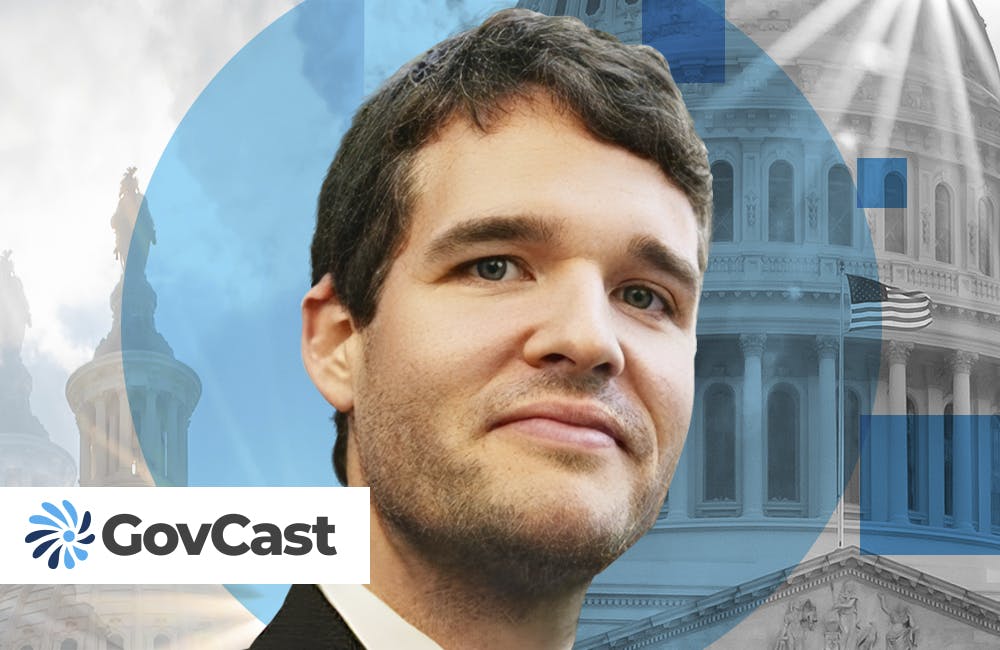Agencies Leverage Data to Ramp Up Health Care Enrollment, Digital Services
Federal tech leaders emphasize the importance of data to develop digital health services.

The COVID-19 pandemic prompted federal agencies and partnering organizations across the health and technology sectors to accelerate development and delivery of digital platforms and services to ensure all Americans receive timely access to health care services.
At GovernmentCIO Media & Research’s Digital Services: Health IT virtual event, public health officials and academics discussed how the pandemic presented an opportunity to reach a segment of the population which, prior to the COVID-19 pandemic, didn’t participate in public health programs even though they were eligible to do so.
“We’re really extending access to the data, the workflows and the caregiver through new applications, and we’re looking to do that as quickly as possible,” said Tom Guido, senior director of Software-as-a-Service (SaaS) and Platform-as-a-Service (PaaS) Solutions at the Department of Veterans Affairs (VA), during the event.
Guido said COVID-19 “validated [the VA’s] approach” to service delivery. Before the pandemic began, the VA developed an approach that supports the rapid onboarding and implementation and modification of as a service applications.
“I’m grateful that we had this program in place prior to the pandemic so we could address emergent and fluid requirements, without sacrificing quality or security, quickly,” he said. “Today, we’ve implemented 34 new applications to support COVID-19, another 27 of those that were already in our portfolio were directly supporting COVID-19.”
The Biden administration set new standards for agencies as they respond to the COVID-19 pandemic. Mike Jimenez, chief technology officer for the Center for Consumer Information & Insurance Oversight at the Centers for Medicare & Medicaid Services (CMS), said the Biden administration presented an opportunity to expand healthcare coverage to consumers.
“Within a month of the changeover of administration we were asked to open a special enrollment period. We had to work very closely with our partners within CMS and our external partners in the government and private companies,” Jimenez said at the event. “It was very successful for us. Over 2 million people were able to get insurance that otherwise wouldn’t have been able to enroll during this period.”
As agencies look to increase access to healthcare enrollment and digital health services, providers are expanding reach and engagement to simplify enrollment for customers and streamline redundant processes.
“Engagement platforms today have to be more oriented to the consumer and their demand,” said Nelly Connolly, global account manager for Federal Healthcare at ServiceNow, at the event. “They want Amazonian experiences, so when they shop for a health plan, they want to be able to do it at any time of day or night, they want to be able to ask quick questions to a knowledge bot or agent bot, they need AI and predictability to help narrow the focus for them.”
With the rising demand for innovative healthcare enrollment tools and digital services, agencies aim to boost efficiencies with data to make actionable, informed decisions. Both internal and external partnerships are key to collecting the right data at the right time.
The VA’s Million Veteran Program (MVP) collects genetic, lifestyle, military exposure, and health information. As part of this initiative, the VA established a comprehensive database for scientific discovery and pipelines to translate research findings into clinical settings.
“The biggest advantage that we had was we had a stable population of veterans at the VA that are very altruistic, and they look at participating in research as another way to serve their country,” MVP Director Sumitra Muralidhar said at the event. “We have a very rich electronic medical health record, which goes back 30 years, and we have data on 24 million veterans.”
At Howard University, Dean of Strategy and Outreach Michael Crawford focuses on connecting innovative technologies with underserved populations to ensure access and equity. Howard University also generates data in a live clinical setting to drive predictive analytics about how the organization manages patient outcomes.
“We are looking at using these technologies to generate data and insights, and then aggregating that data across multiple domains to create a singular picture of how we can impact our individuals, our families, as well as our communities in a positive and meaningful way,” Crawford said.
The National Institutes of Health (NIH) wants to close the health access gap by distributing wearable devices to underserved populations under the All of Us Research Program’s new pilot initiative. The wearable devices will collect data from historically hard-to-reach populations and improve public health data sets that inform research and public health policy.
“One of our program principles is that we want at least half of the people who enroll in the program to be non-white, and we want at least 75% of the people to be underrepresented by medical research for some reason, whether that is educational attainment, region of the country, disability status, sexual orientation, gender minority status,” said Chris Lunt, CTO of NIH All of Us Research Program, at the event.
Looking ahead, health agencies and organizations are working toward simplicity, boosting user experience, and creating new efficiencies within IT systems. CMS will integrate human-centered design principles into new and existing solutions to support this development process.
“Modernizing as quickly as we can, as effectively as we can, is critical,” Jimenez said. “We have to keep looking at not only where we’re going, but what have we done, and how can we take those things and keep making them better. This mindset of continuous improvement has got to be more than just a slogan. It has to be something we bake into what we do.”
This is a carousel with manually rotating slides. Use Next and Previous buttons to navigate or jump to a slide with the slide dots
-

IRS CX Efforts Come With a New Acquisition Office
The agency is using Inflation Reduction Act funds to transform the taxpayer experience through digital tools and technology.
3m read -

How Health Care Leaders Should Plan for Building Cyber Resiliency
Policy leaders recommend health care organizations implement tools like encryption and multi-factor authentication to protect their data.
4m read -

HHS Aligns AI, Tech Strategy Under its Policy Agency
ONC will have a new name and oversee more c-suites to better shape the future of health care technology policy.
3m read -

Inside VA’s Lighthouse for App Development
Andrew Fichter discusses how Lighthouse is serving veterans and why it is necessary for modernization of veterans services.
24m listen








